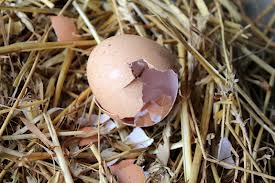Posts Tagged ‘Commercial Poultry’
How to Roast the Perfect Chicken
There’s nothing better than a kitchen filled with the savory, satisfying aroma of a roasting chicken; at least in my opinion. It’s an important cooking skill too – roasting a bird that can eventually be made into 4 or 5 different meals. With just a few bought or homegrown onions, carrots and potatoes or parsnips, and a home raised or store bought broiler you’ll be on your way to a heart-warming meal the whole family will love. It’s easy, cheap and turns out wonderfully every time. It takes just a few minutes to prep and everything you need you probably already have on hand. Follow these simple instructions and I promise you’ll want to roast a chicken every week. I was taught this method by my father-in-law; one of the best meat cooks I know.
Here’s what you’ll need to roast the bird:
Whole roasting chicken
3 to 4 tablespoons, room temperature butter
Rosemary, garlic, and sage, chopped if fresh, crumbled if dry (or commercial poultry rub)
Tin foil
Roasting pan, without rack
Meat thermometer
1 medium onion, chopped
2 or 3 medium baking potatoes, peeled & quartered (parsnips can be added or substituted)
3 to 4 medium carrots, cut into chunks
These are the basics, but any seasonal veggie will do. Shake things up a bit by using yams, winter squash or summer squash, Brussels sprouts, or beets. Make it your own!
Preheat your oven to 400 degrees. I know that seems high, but you’ll see why in a minute.
Thaw frozen chickens in the fridge. Rinse thawed or fresh birds in cold water; making sure to rinse inside the cavity, under the wings and around the legs, then shake off excess water. Place your bird in a large bowl and take out your roasting pan. I use a 3-inch deep Calphon pan with high handles for easy lifting.
Chop the onions, carrots, potatoes or parsnips into chunks no large than 3- inches and spread them around the bottom of the pan. The veggies will act as a rack for the bird, letting air underneath so the bird cooks thoroughly as well as being cooked in the bird’s juices and fat. Drizzle the veggies with olive oil and sprinkle with salt and pepper or poultry rub. Set the roasting pan aside and go back to your bird-in-a-bowl.
Shake the bird again to get off any excess water and set it on a cutting board. Smear the bird all over with butter, making sure to get under the wings and around the legs. Gently slip your fingers under the skin that is over the breast and smear butter under the skin as well.
Now, take your finely chopped rosemary, garlic, sage or commercial chicken rub, and sprinkle them all over your bird. For a nice presentation on a serving platter, tie the drumsticks together with some kitchen string, and place the bird on top of your cut veggies.
Your buttery herb-rubbed chicken is ready for the oven.
Place the roasting pan on the center rack of your 400 degree oven. The flash of a hot oven followed by a slow roast will give the bird a luscious, crispy, golden skin. Let it crackle and pop for about 20 or 30 minutes before lowering the temp to 350. At this point you can cover the bird with foil which will keep it from scoarching the skin, but will allow it get crispy. I let mine cook undisturbed for an hour before taking it out to check for “doneness”. The skin should be a nice rich brown color and the internal temperature should be about 170 at the thickest part of the breast. I usually make a slice near the thigh to see if the juices run clear and not red or pink. If this happens just pop it back into the oven and recheck it every 5 to 10 minutes until it is done.
When you’re confident it’s done, pull the pan out and let it stand for about 15 or 20 minutes (the meat will continue cooking as it cools). As the bird cools, spoon the pan juices into a fat separator, pour off the juices into a small saucepan, add a tablespoon of butter and boil until reduced by about half. Taste and adjust the seasonings. Now you’re ready to slice the meat and serve it with a side of savory roasted veggies and a fabulous rich, herb infused gravy. Enjoy!
The leftovers from this easy roasted chicken make a great chicken salad, chicken sandwich, or chicken and rice casserole. And — don’t forget to simmer down the carcass (bones, skin and all) and pull off any remaining bits of meat for the best chicken soup base ever!
Learn to raise your own homegrown chicken with these helpful posts.
Raising Meat Chickens in Suburbia
Why Raise Chickens on a Suburban Homestead?

Recent comments
Aenean nonummy hendrerit mauris. Phasellus porta.